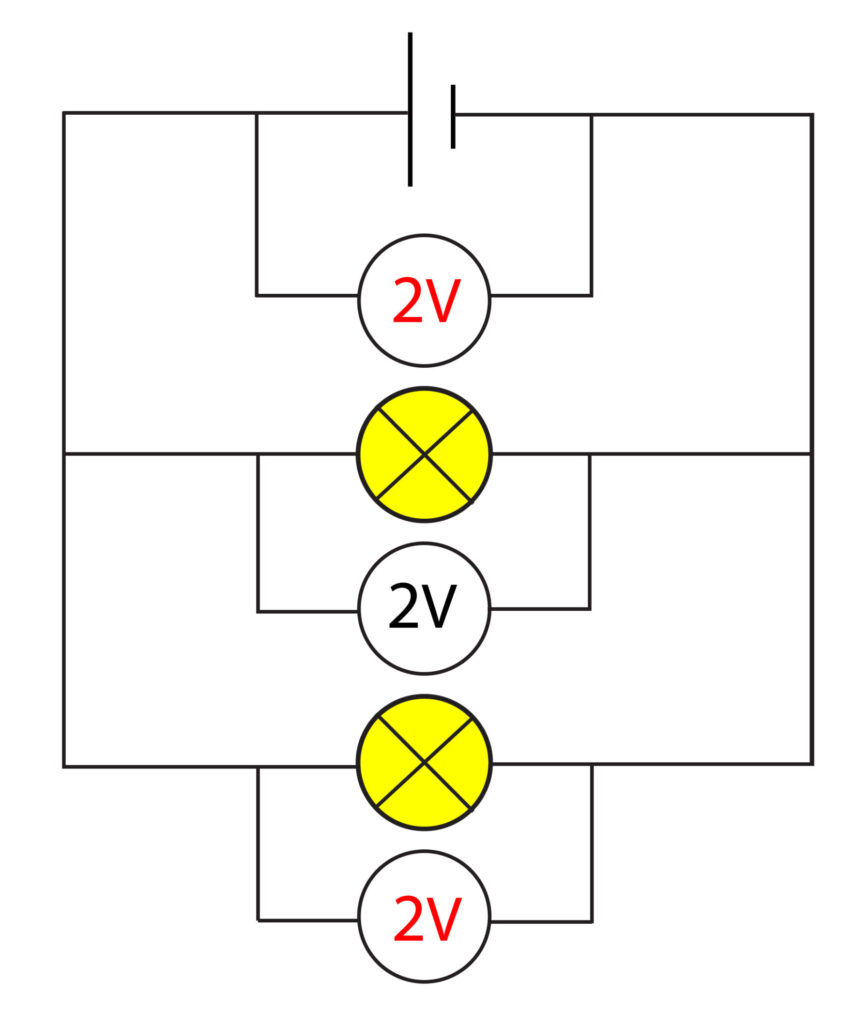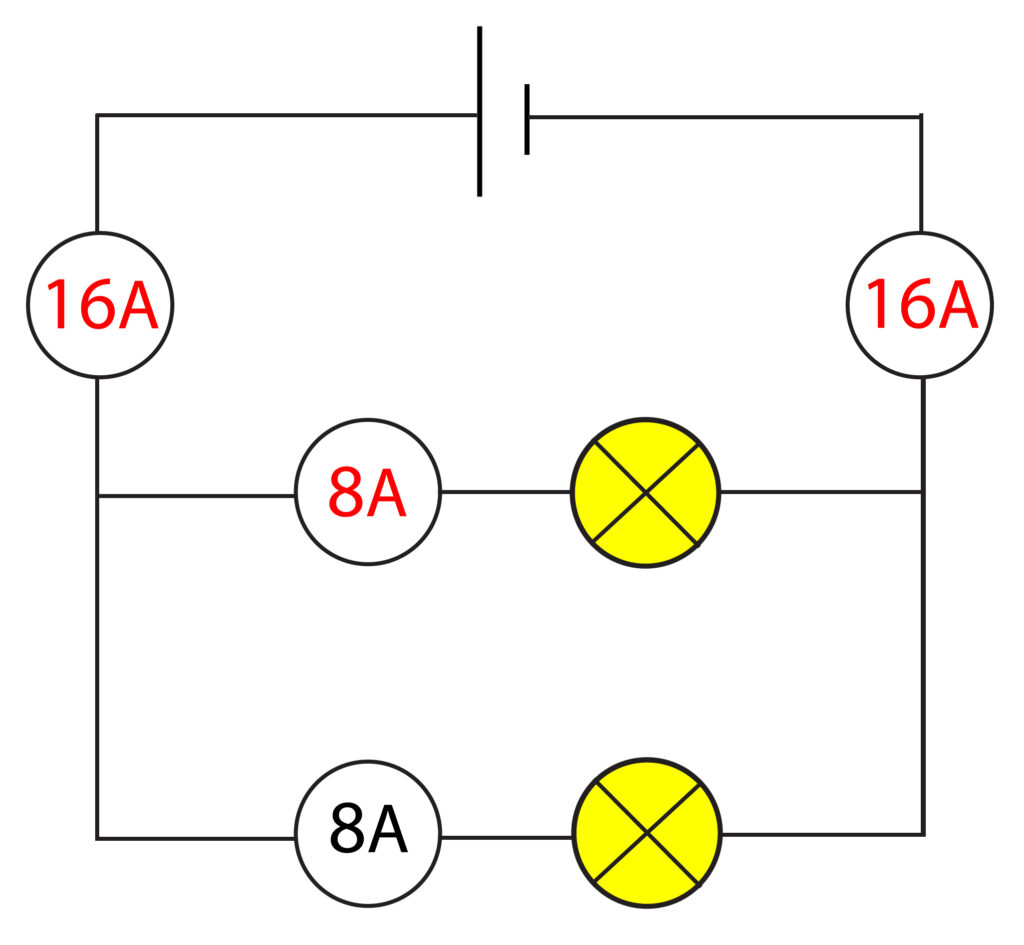Answers to AQA GCSE Parallel Circuits(Physics)
Practice Questions
1.In the circuit below calculate the value for the potential difference across both the cell and one of the bulbs.

In a parallel circuit, potential difference is the same across each component. So, the potential difference will be 2V across the cell and 2V across the bottom bulb.
2. Calculate the missing value for current for the ammeters in the circuit below. Assume that all bulbs are identical.

The 16A current splits at the junction on the left of the circuit, so that 8A will go through each bulb, these current then rejoin at the junction on the right hand side of the circuit to reform the 16A current.
<br
3. A parallel circuit contains 3 resistors, wired in parallel 10 ohm, 5 ohm and 4 ohm resistor. State the value for the total resistance of the circuit.
In a parallel circuit, total resistance is less than the value for the resistor with the least value. So, in this case the total resistance is less than 4 ohms.
Absorption and Emission of EM Radiation
JJ Thomson and Plum pudding model
Ernest Rutherford and the Nuclear Model
Niels Bohr changing the Nuclear Model
Discovering the Proton and Neutron
Measuring radiation from radioactivity
Radiation types and properties
Random nature of radioactive decay
Radioactive contamination or irradiation
Hazards of contamination and irradiation
Studies on the effects of radiation on humans
Different half lives of radioactive isotopes
Nuclear Fission Chain Reaction
Writing nuclear fission equations
Drawing ray diagrams for a concave lens
Drawing Ray Diagram to produce a virtual image for a convex lens
Drawing ray diagram to produce a real image for a convex lens.
Specular and Diffuse Reflection
Seeing Coloured Objects Part 2
Viewing objects through coloured filters
Transparent, Translucent and Opaque